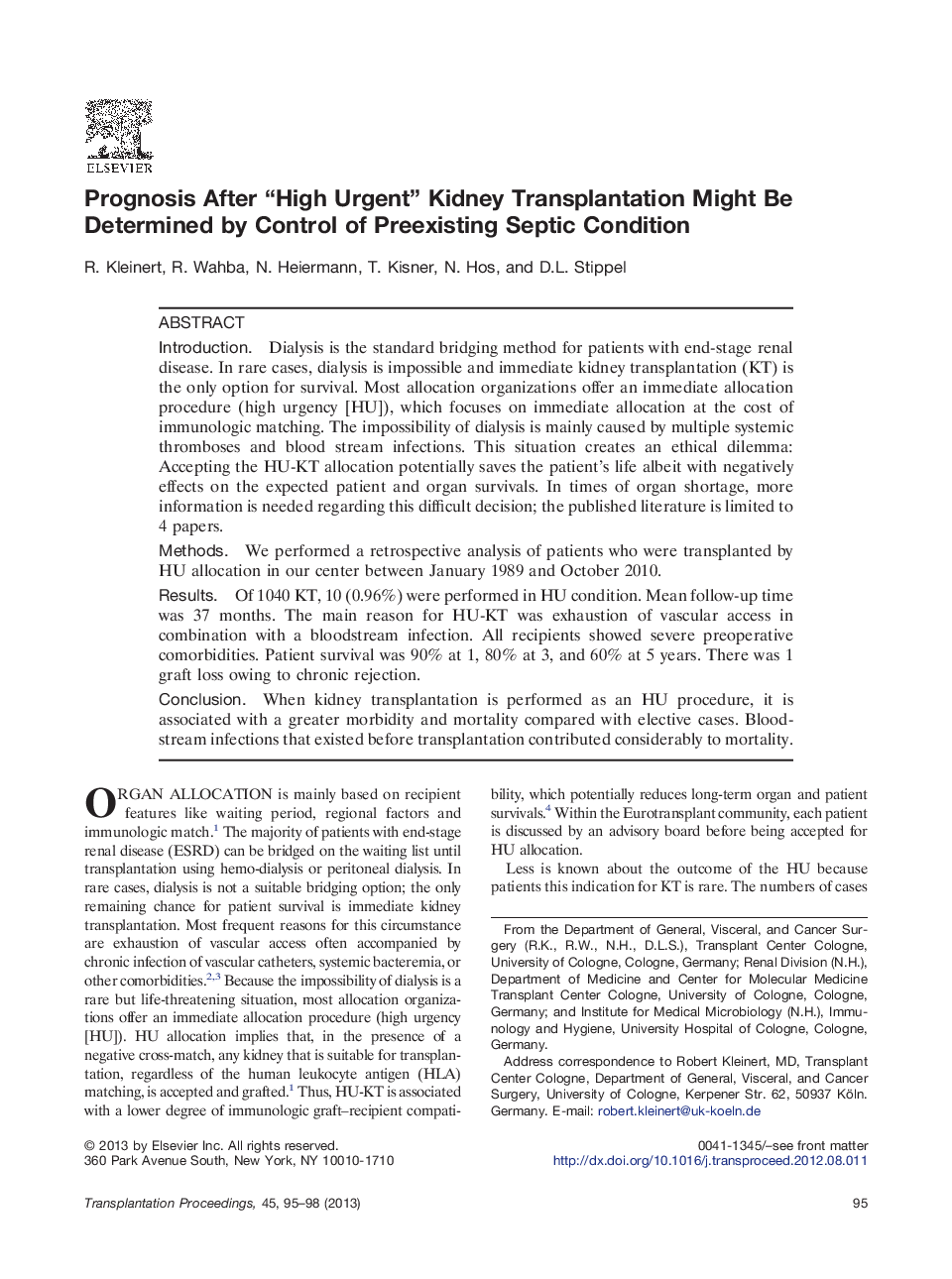| Article ID | Journal | Published Year | Pages | File Type |
|---|---|---|---|---|
| 4257068 | Transplantation Proceedings | 2013 | 4 Pages |
IntroductionDialysis is the standard bridging method for patients with end-stage renal disease. In rare cases, dialysis is impossible and immediate kidney transplantation (KT) is the only option for survival. Most allocation organizations offer an immediate allocation procedure (high urgency [HU]), which focuses on immediate allocation at the cost of immunologic matching. The impossibility of dialysis is mainly caused by multiple systemic thromboses and blood stream infections. This situation creates an ethical dilemma: Accepting the HU-KT allocation potentially saves the patient's life albeit with negatively effects on the expected patient and organ survivals. In times of organ shortage, more information is needed regarding this difficult decision; the published literature is limited to 4 papers.MethodsWe performed a retrospective analysis of patients who were transplanted by HU allocation in our center between January 1989 and October 2010.ResultsOf 1040 KT, 10 (0.96%) were performed in HU condition. Mean follow-up time was 37 months. The main reason for HU-KT was exhaustion of vascular access in combination with a bloodstream infection. All recipients showed severe preoperative comorbidities. Patient survival was 90% at 1, 80% at 3, and 60% at 5 years. There was 1 graft loss owing to chronic rejection.ConclusionWhen kidney transplantation is performed as an HU procedure, it is associated with a greater morbidity and mortality compared with elective cases. Bloodstream infections that existed before transplantation contributed considerably to mortality.
